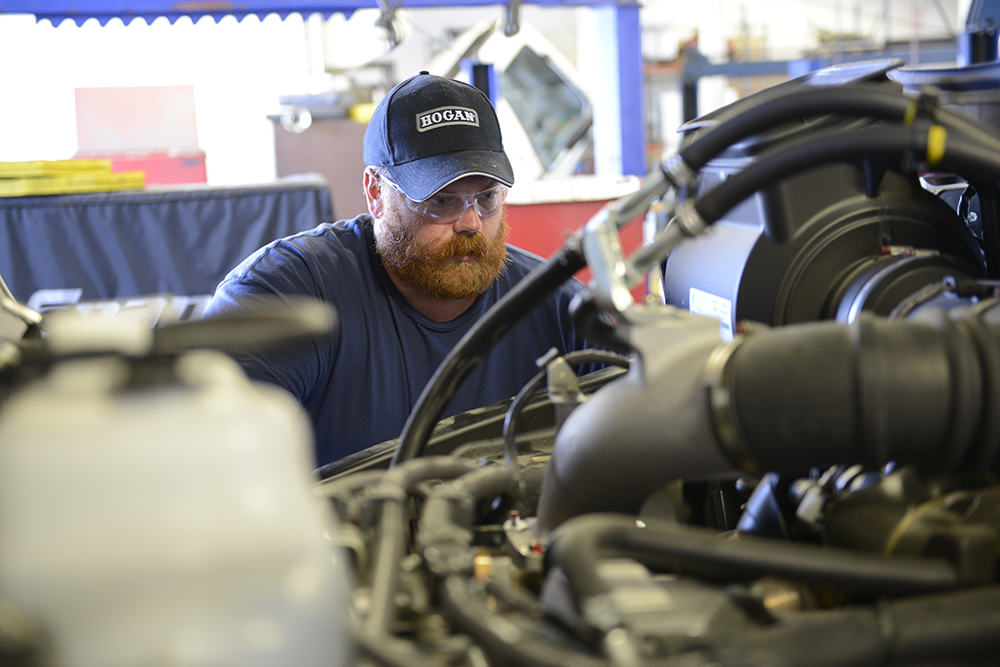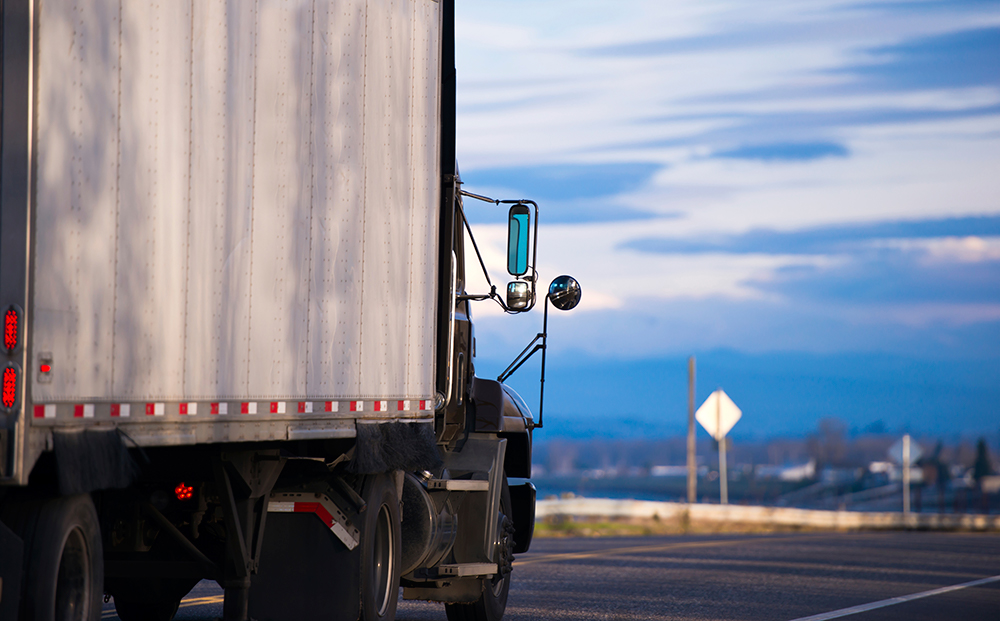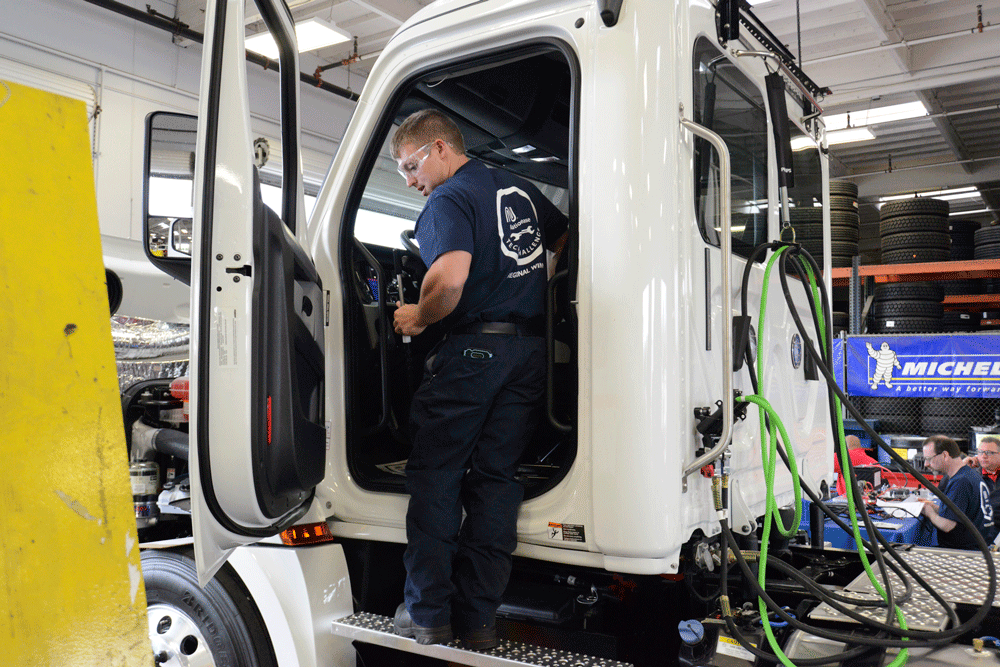Every year holds its challenges for our industry and 2023 is no exception to this rule. But these challenges also offer opportunities for businesses to either make the necessary changes or get ready for the changes sure to come. Though it’s improbable to cover every issue in a blog, I’ll address the ones I think will most impact our industry in the near and not-so-near future.
Inflation/interest rates
No big surprise here as every business and every consumer is dealing with inflation and interest rates that are impacting when, how, and why they purchase. With the Fed continuing to raise interest rates to combat inflation, uncertainty is the overriding concern. Inflation for the transportation industry is trending higher than what the national reporting indicates. Trucks, especially our Class 7 and 8, are increasingly expensive. When interest rates rise and, considering that in 2027 with the proposed ESG regulations taking effect, diesel trucks are forecasting to go up by $50k to $60k per truck, companies and carriers, especially those with smaller fleets, are put at a distinct disadvantage. On top of that, there’s still the projection that perhaps in the first or second quarter, we are going to potentially see a significant downturn in the economy. Whether we’re going to have a “hard” or “soft” landing is still unknown.
Allocations/supply chain issues
Even though new trucks are starting to be delivered, as every fleet knows, allocations are still far behind where we need them to be. Every week, we get new notifications of changing allocations…of 2023 orders moving to 2024. We’re still catching up on backlogs of trucks as well as the parts and components that keep them on the road. Fleets have to be a lot more strategic when it comes to their inventory levels. Yet, how much do fleets want to invest when we just don’t know where the market is going? This shortage and backlog put fleets in a position where they need to go after these new trucks, regardless of the economy. Think of it like an Easter egg hunt that has a limited timeframe. Everybody is out there grabbing as many “eggs” as they can get right know…because we know the whistle is coming. We’re going to grab what we can. With not enough trucks available and a slowly recovering supply chain, fleets need to be aggressive and try to do what’s necessary to grow their company.
Aging assets/maintenance needs
The upshot of tight allocations and shortages means that fleets aren’t replacing their older trucks and the longer that goes on, the bigger the problem. Right now, our fleets are probably on average a year to a year and a half older than we would normally want them to be. What that means is that we’re not replacing our older trucks and that becomes a bigger problem day after day since older trucks need more maintenance. Our trucks are getting up to really unsustainable and unmanageable levels, where our costs, specifically our maintenance costs are rising. Older trucks need more maintenance and that means less time on the road for many of them. Although our trucks are incredibly sturdy and reliable, every asset has its shelf life and our older trucks are reaching and surpassing their most effective shelf life. So, we need those new trucks.
Used truck trajectory
The used truck market has been dropping substantially over the last couple of months. Part of the reason is that new trucks are finally coming in. We saw new trucks starting to come in on a larger basis right around the end of the third quarter and into the fourth quarter. Those trucks were obviously replacing older trucks; consequently, those older trucks entered into the used truck marketplace, increasing the supply of used trucks. This happened at the same time as the freight market started dropping. That in turn caused the demand for used trucks to drop off of its peak. With all this, the market for used trucks is not upside down but it’s certainly trending in a different direction, more towards a correction.
Worker shortages
This is an ongoing challenge and makes it on my list of concerns, year after year. Getting good people with the right skillsets is increasingly difficult. Every business is complaining about the worker shortage; some businesses can offset those shortages by having others in the company take up the slack. But when it comes to CDL drivers and diesel technicians, that’s not the case. We need people that are specifically trained for that job. And with the advent of electric trucks, which is happening now, we need technicians with a whole new skillset. I won’t belabor this issue since it is ongoing, but we are all going to have to find better ways to communicate with younger workers to get them to see how our industry is actually a pretty cool category.
Emissions regulations
Emissions regulations are, of course, something every fleet is well aware of. We spend so much time now talking about the transition to alternative power: battery, electric power, hydrogen fuel cell. These are where the future is going; how far in the future is yet to be seen. For certain class trucks, the future is NOW. Certainly, the CARB rules and mandates on emissions are big, but we know what they are and when they are going to hit. Different fleets with different classes of assets will react in the best ways possible to both meet their business needs as well as the existing and impending regulations.
EVs now and later
The transition to electric from diesel depends, to a huge extent, on the type of trucks you’re looking for. For fleets, the smaller the truck the faster the adoption rate. We were confident that Class 7 and 8 trucks were a long way off; but Tesla just released and is starting to deliver trucks in those classes with the claim (which we still have to substantiate) that the truck has a 500-mile radius. That’s a huge game changer if it’s true. Another factor is that the price comparison between electric and diesel is going to get a lot closer than where it is today. The reality is, whether you like it or not, whether you’re unsure of the efficacy of electric trucks for your business, they are coming. One of the big issues in transitioning to an electric fleet is the charging capability, grid capacity, and over-the-road infrastructure. There is so much to say on this issue that I’ll be covering it in a future blog. Suffice it to say, if you’re not thinking about and planning for a transition to electric, you will likely find yourself…and your business…well behind the eight ball. Time is shorter than you may think.
Why lease vs. own makes more sense than ever
All of these issues make leasing vs. owning a better choice than ever, and that’s where NationaLease excels.
- Allocations – The aggregated buying power of our members and customers gives us leverage when it comes to allocations. Certainly, companies can try to go out on their own to purchase these trucks, but unless transportation is the core of your business, it makes more sense to let a provider like NationaLease undertake that burden, especially when you consider interest rates and inflation concerns. A company as large as NationaLease is strong enough to minimize the impact of inflation and contain costs better than almost anybody out there.
- Maintenance – Maintenance costs are increasing. Good technicians are hard to find and harder to retain, so outsourcing your maintenance needs make sense. Right now, if your truck needs maintenance, lines are longer than ever at dealerships and garages. And when your truck is in the garage instead of on the road and delivering your company’s product, that’s a loss of revenue that goes straight to impacting the bottom line. NationaLease has over 36,000 service and repair facilities throughout the U.S. and Canada, and since our shops are contracted and our staff handles only our contract business, our customers don’t have to wait in line. That gives them the wherewithal to keep their trucks on the road.
- Parts/component shortages – It’s not just shortages that negatively impact private fleets; it’s also the unpredictability when it comes to cost. Our customers who have a full-service lease with us don’t have to worry about that, because if the cost goes up, we’re the ones who bear it. Tire prices go up…that’s our issue, not yours. Outside of a once-a-year CPI adjustment, we give fleets consistency in what their cost of business is going to be; they know precisely what their fleet will cost for the year, and they have the confidence that those assets will be on the road increasing productivity and profitability.
- Electric vehicles – As I indicated earlier, I’ll be covering this issue in depth in an upcoming blog. What is important to know is that NationaLease is being very proactive when it comes to preparing for the transition.
What 2023 will hold for fleets is yet to be seen, but the challenges are clear. The reality is that, after the holiday buying period, people who have not yet tightened up their spending may do so. It takes a little while for that change to flow through into our world. Many of us will need to look at right sizing our fleets. NationaLease will continue to order trucks to enable our customers to meet demand. My opinion is somewhere at the beginning of Q2 we’ll have a much better idea of how deep the financial situation is going to get. Preparing now is what will help company’s optimize their fleet.




